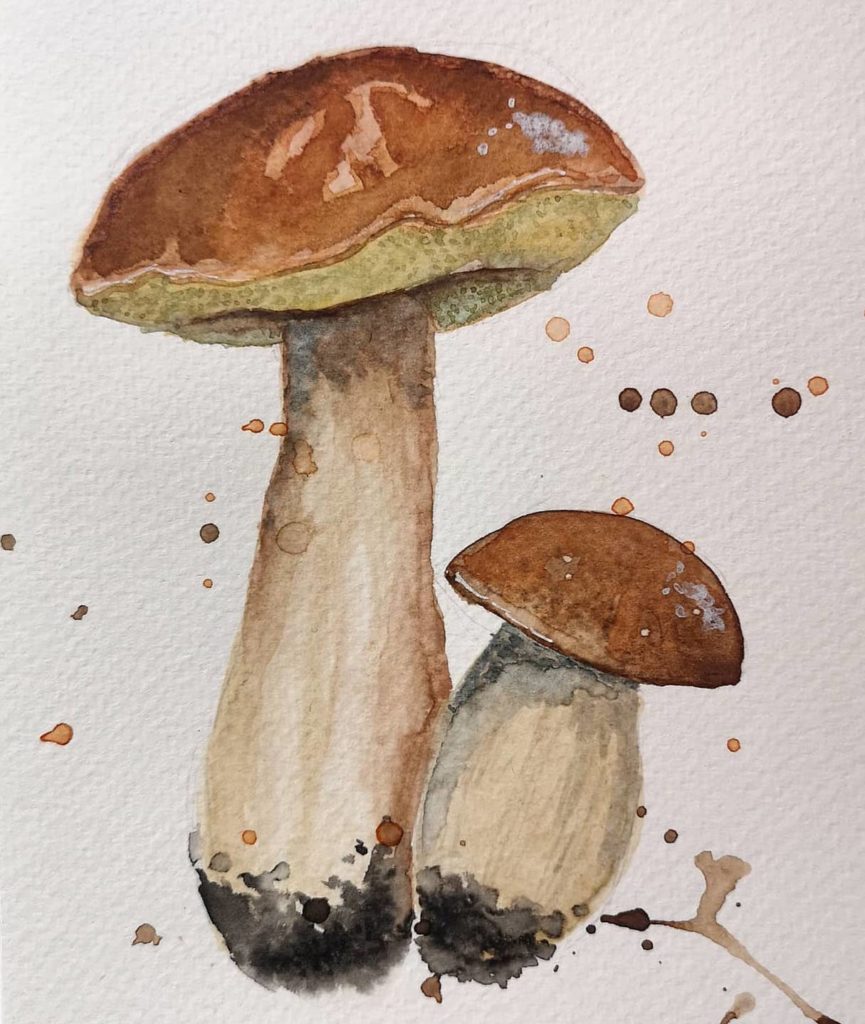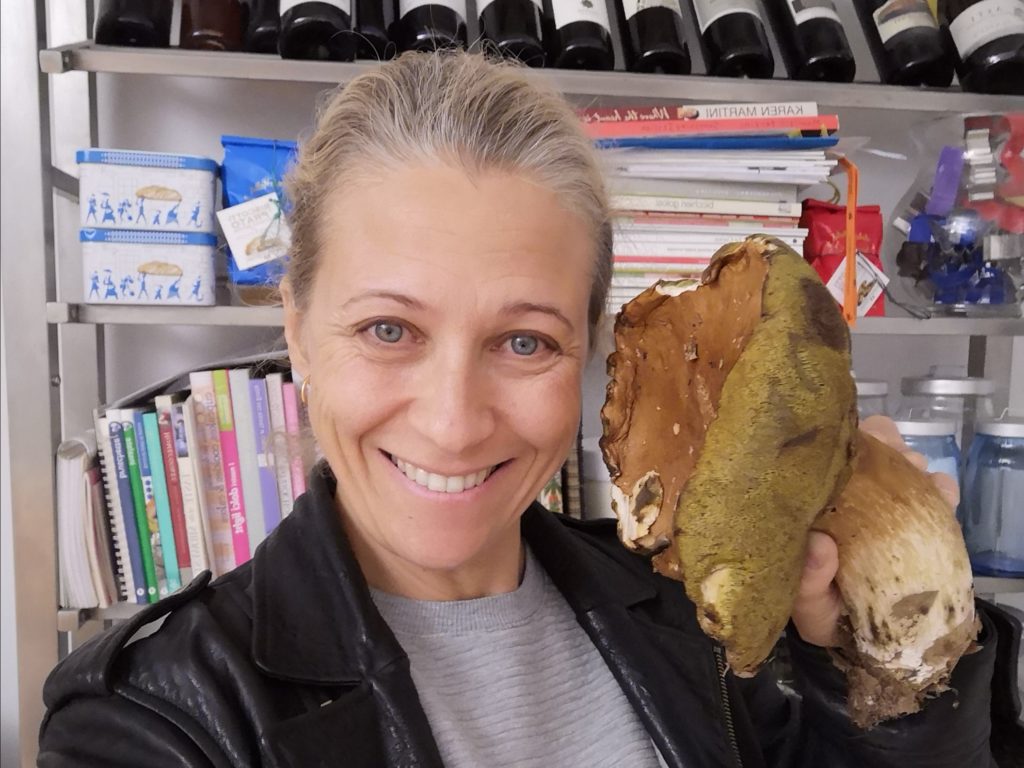I will never forget my joy when many years ago, I found my very first porcino mushroom. I really couldn’t believe my eyes when after what seemed like endless hours of climbing up and down a mountainside in the hills above Pistoia, about an hour from Florence. There he was in plain sight, almost like he wanted me to find him all along! I remember that after finding the first, it was almost like my eye was better trained and it was with a very triumphant smile on my face that I returned to the house clutching my basket in my arms, lined with chestnut leaves and full of Porcini mushrooms.

Autumn is one of my favourite months in Tuscany as it brings many of nature’s bounties with it, perhaps the most exciting and elusive is the beloved porcino mushroom.
Boletus edulis is one of God’s great gifts to humanity; a rich, meaty mushroom that is amazingly versatile.
The excitement of the season is contagious, especially if you witness the early morning thrill of foragers and hunters returning with baskets of their gourmet treasures.
It can be quite entertaining to overhear the locals bragging about how many kilos of funghi they have found, of course never letting you know the exact location of their find for fear that word will spread and their secret location will be over-run and stripped of any remaining mushrooms.

Porcini can be enjoyed both fresh and dried and cooked in a number of ways. They should be firm, with unblemished white stalks and brown caps, not nicked or broken. If the undersides of the caps have a yellowish-brown tinge to them, the mushrooms are heading into over-ripeness, and if they have black spots on them or the under-caps are deep green, then they are already overripe.
Small holes found on the mushroom are usually a sign of worms but these are harmless and will scurry away once you slice your mushrooms so best to do this outside or on the kitchen sink.
As soon as you get your porcini home, scrape any dirt you may find off the stalks and wipe the mushrooms clean with a damp cloth — only wash them if you absolutely must, but try to avoid getting them wet. Store them in a paper bag – never plastic!
Tuscan cooks season their Porcini with nepitella, a sort of small-leaved mint with hints of oregano. In other parts of Italy, they have a similar herb called mentuccia but it is not the same as nepitella which is much better suited to the porcino. Parsley or thyme can also be used.
You can also buy dried porcini – they obviously cannot be grilled, but do play an important role in the kitchen: they’re blessed with a terrific savory aroma that adds a lot to stews and sauces, and they are my go-to when making my favourite risotto.


Porcini Mushroom Salad
Eating Porcini mushrooms raw is probably the best way to taste these very special funghi. The Porcini must be in excellent condition and preferably eaten within a day or two of being harvested.
Ingredients
Fresh Porcini Mushrooms
Nepitella (use mint, thyme or parsley if not available)
Extra Virgin Olive Oil
Lemon Juice of half a Lemon
Fresh Parmesan Cheese, Shaved
Salt & Pepper
Method
1. Gently clean porcini mushrooms with paper towel or a damp cloth. Scrape off all dirt and trim the stem. Try to avoid using water but if you must, give your mushrooms a light rinse and dry immediately.
2. Slice mushrooms with a mandolin and add a generous quantity of Nepitella leaves.
3. Dress with Extra Virgin Olive Oil, a little lemon juice, salt & freshly ground black pepper.
4. Top with Shaved Parmesan.

+ show Comments
- Hide Comments
add a comment